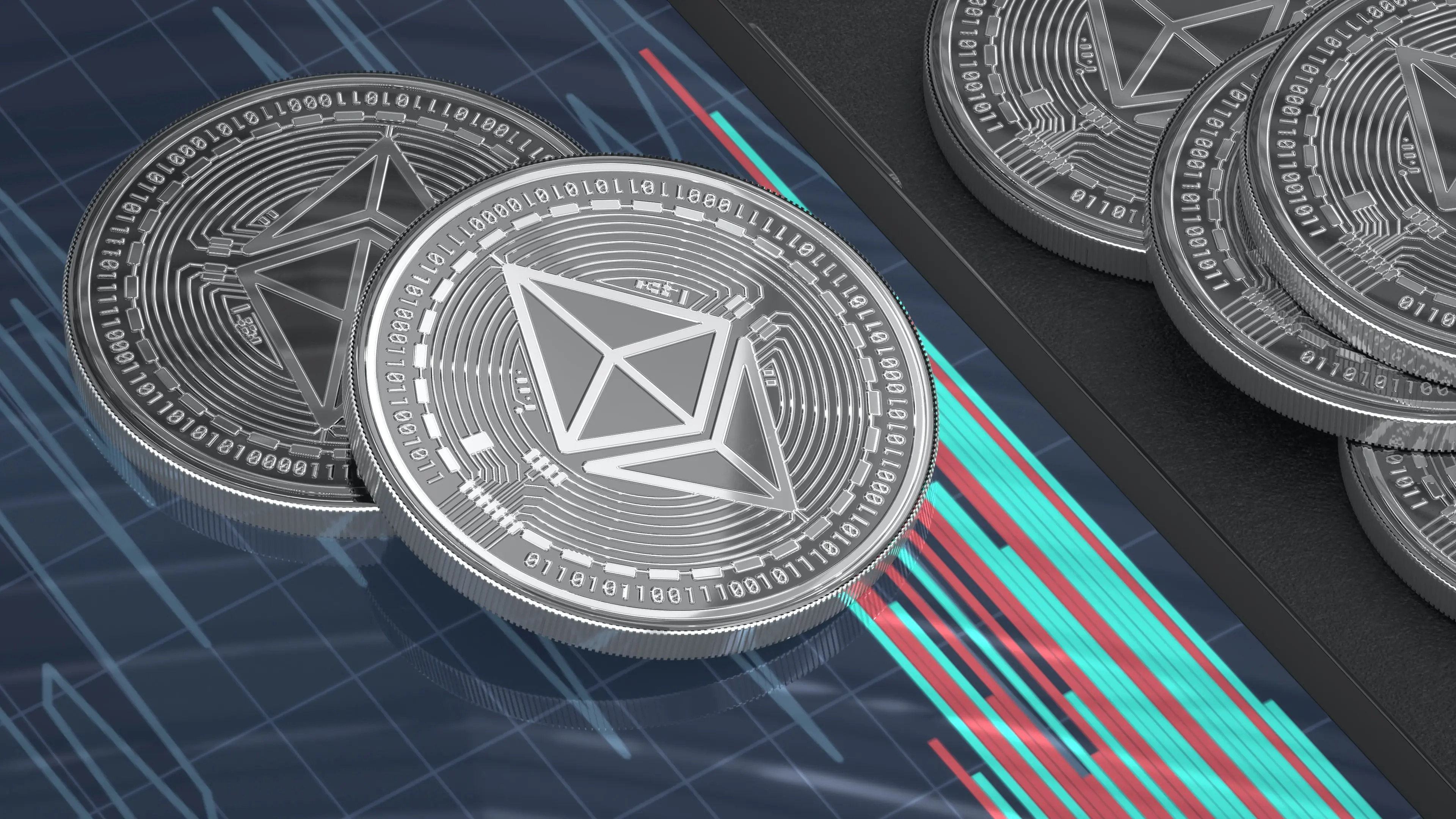
Recent research has shown that the enterprise blockchain market will hit $21 billion by 2025 (Fortune Business Insights) - a staggering figure, demonstrating the rapid pace of expansion in the industry. A market that was initially defined by tight-knit communities has now become the domain of the governments, businesses and institutional investors. But this rising widespread popularity is posing new challenges, particularly concerning scalability. How can they be solved? And does the answer lie in a multichain future?
Blockchain scalability issues
It’s a well known fact that blockchains suffer congestion and scalability issues. This is far-reaching and leads to slow transaction processing times and higher transaction fees, which causes a poor user experience.
Ethereum, the second-biggest blockchain network in the world, has been suffering from scalability issues for the last few years, which has led some developers to explore other options - including Cardano or Solana which offer higher speeds. However, most developers believe that for DeFi to take centre stage and for decentralized applications to be ready for the billions of people who will adopt these services soon, blockchains don't need to compete but rather cooperate with each other for a perfect user experience.

What is Multichain?
Multichain might just hold the answer to many of the above-mentioned scalability issues. But how does it work? As the name itself suggests, a multiple chain ecosystem ecosystem is one in which several blockchains are interconnected.The ultimate aim is to improve user experience. It is dependent on cross-chain solutions, a few of which are already being produced.
SushiSwap leads the way in multichain adoption
In March 2021, SushiSwap jumped on the trend of decentralized applications being deployed on multiple chains to catch up with the main rival, Uniswap. The SushiSwap protocol is now one of the largest multichain adopters, and exists on 13 chains at the time of writing, including Ethereum, Binance Smart Chain, Polygon, Avalanche and Fantom.
Ethereum has dominated in SushiSwap for many months, but Polygon recently took over, showing how fast layer-two solutions can take charge. The main driver behind SushiSwap’s adoption of multichain has been an aim to drive down gas fees. By offering different options, other than Ethereum, the protocol has been successful in achieving this.

Aave uses multichain to take it to the next level
DeFi protocol, Aave is exploring a multichain approach to take it to the next level. It is already a success through its crypto lending and borrowing offering, which has led to many users locking up assets.
Last month, Aave’s founder and CEO, Stani Kulechov, stated that Aave was contemplating launching on many different networks. He revealed the possibility of expanding Aave‘s loan and borrowing markets on Solana via the EVM-compatible solution Neon Labs, Avalanche, and the Optimistic Rollup solutions Arbitrum and Optimism as part of its multichain strategy. The expansion is planned to take place in phases. Kulechov also revealed that the team is working on a cross-chain governance structure.
The important role of multichain aggregators
Multichain or crosschain aggregators identify the best possible routes to fulfil trades across blockchain ecosystems. In doing so, they ease the burden of existing DeFi users and remove some of the barriers to entry for new joiners.
Apeboard
An example of such an aggregator is Apeboard, which enables users to monitor their portfolios across different platforms. Apeboard supports 11 chains, including Ethereum, The Binance Smart Chain, Polygon, Solana, and Terra. It is perfect for monitoring assets among several chains and tracking balances.
1Inch
It’s also worth mentioning 1Inch here, an exchange aggregator which works by scanning DEXs to find the lowest cryptocurrency prices for traders. 1inch offers its liquidity to 78 platforms across Ethereum, Binance Smart Chain, and Polygon.
AnySwap
Last but not least, AnySwap deserves a mention. Launched last year, it’s afully decentralized cross chain swap protocol, based on Fusion DCRM technology. It allows swaps between any coins on any blockchain which uses ECDSA or EdDSA as a signature algorithm. AnySwap features a decentralized cross chain bridge, cross chain swaps and programmed pricing and liquidity.

The most popular multichain protocols
When talking about a multichain future, it’s important to discuss multi-asset blockchains which store, transfer, and verify information and assets existing on a whole range of public blockchains, using Decentralized Inter-Blockchain Communication (IBC).
Orbin Chain
One of these protocols is Orbit Chain which aims to work as a hub for public blockchains, for fluid asset movement and interaction within a single blockchain network.
Polkadot
Polkadot is also worth mentioning here - it’s a multichain protocol that is able to transfer data among both permissioned and permissionless blockchains. Polkadot's bridges allow its parachains and parathreads to connect to external blockchains. Polkadot follows the shared security model (or pooled security), providing security to every parachain as soon as it gets attached to the Polkadot Relay Chain.
Cosmos
While Polkadot focuses on security, Cosmos’ priority is interoperability. Its modular structure allows users to create private blockchains and yet be able to connect it with Hubs to send and receive tokens from other public and private blockchains. For connecting blockchains such as Ethereum, Cosmos has Peg Zones which act in a similar way to Polkadot’s bridges.
The bright future of a multichain ecosystem
Despite rapid innovation in the field over the past decade, we can still say that blockchain is in its infancy. At the moment it is still defined and experienced by each of its component parts, meaning that from a user perspective, it lacks fluidity. Some have even compared it to the early years of the internet. Multichain technology would turn this experience on its head, so much so that users might even be unaware which chain they’re operating on. This change would be essential in enabling blockchain to transition to a high-growth industry.
Multichains would support blockchain adoption across many sectors, not least finance and banking. Without such interoperability, transactions between banks using different blockchains would be highly complex for everyone involved. But with a multichain approach, transmitting data would not only be simple, but also fast and secure.
Likewise, in supply chain management, blockchain interoperability can bring huge benefits. Blockchain’s characteristics allow disconnected supply chain management systems to interoperate without high investment costs. It therefore makes sense to leverage these characteristics to transform supply chains.
Last year, the World Economic Forum (WEF) in collaboration with Deloitte, released a report entitled Inclusive Deployment of Blockchain for Supply Chains – A Framework for Blockchain Interoperability. It’s goal is to help companies understand the goals of interoperable blockchains. To quote:
“Interoperability and compatibility issues are key to address in a world after the coronavirus pandemic. The challenge of interoperability is not only a technology problem, but even more so a problem in terms of governance, data ownerships and commercial business models.” Nadia Hewett, Blockchain and Digital Currency Project Lead at the World Economic Forum
Finally, an important benefit of interoperability is the fact that disparate development teams which previously worked in silos, can take advantage of each others’ solutions, thereby driving innovation across the sector.

The potential dark future of multichain
But despite all of the benefits of multichain outlined above, the next few years might pan out differently in the world of blockchain. Why? Well, the biggest development that stands in the way of a multichain future is the launch of ETH 2.0 - the network upgrade that will make the Ethereum Network more scalable and secure. To achieve this, Ethereum will change its consensus mechanism from proof-of-work (PoW) to proof-of-stake (PoS). The upgrade could have a significant impact on the price of Ethereum, as its lower fees and faster transactions will open up the network to greater groups of users.
Ethereum already allows asset transfer on L2 rollups - off-chain aggregators of transactions inside an Ethereum smart contract. Their goal is to reduce fees and congestion by increasing the throughput of the blockchain. But they also provide a number of solutions when it comes to asset transfer.
There is a popular belief that L2 solutions play a big part in enabling Ethereum to win over mainstream users. It has been estimated that 2,000- 4,000 transactions per second can be processed in L2, which is already pretty close to Visa’s processing abilities. Together with the scaling of Layer 1 with Ethereum 2.0 and Layer 2, Ethereum will be harnessing some powerful economic bandwidth.
Indeed, if ETH 2.0 takes full effect, developers might not see any reason to embrace multichain - Ethereum would provide them with everything they need.
So what will the future hold in the world of blockchain? That, of course, all depends on the success of Ethereum 2.0. Stay tuned.



